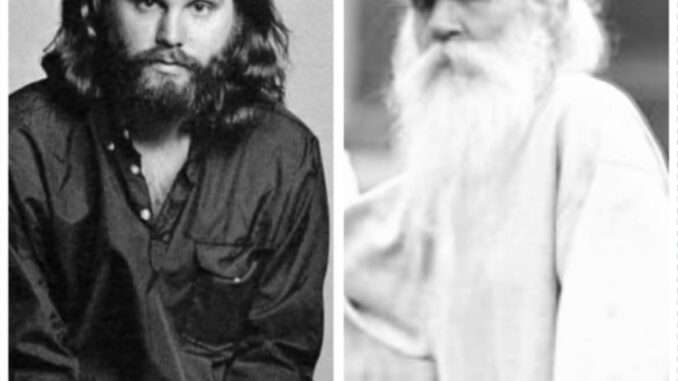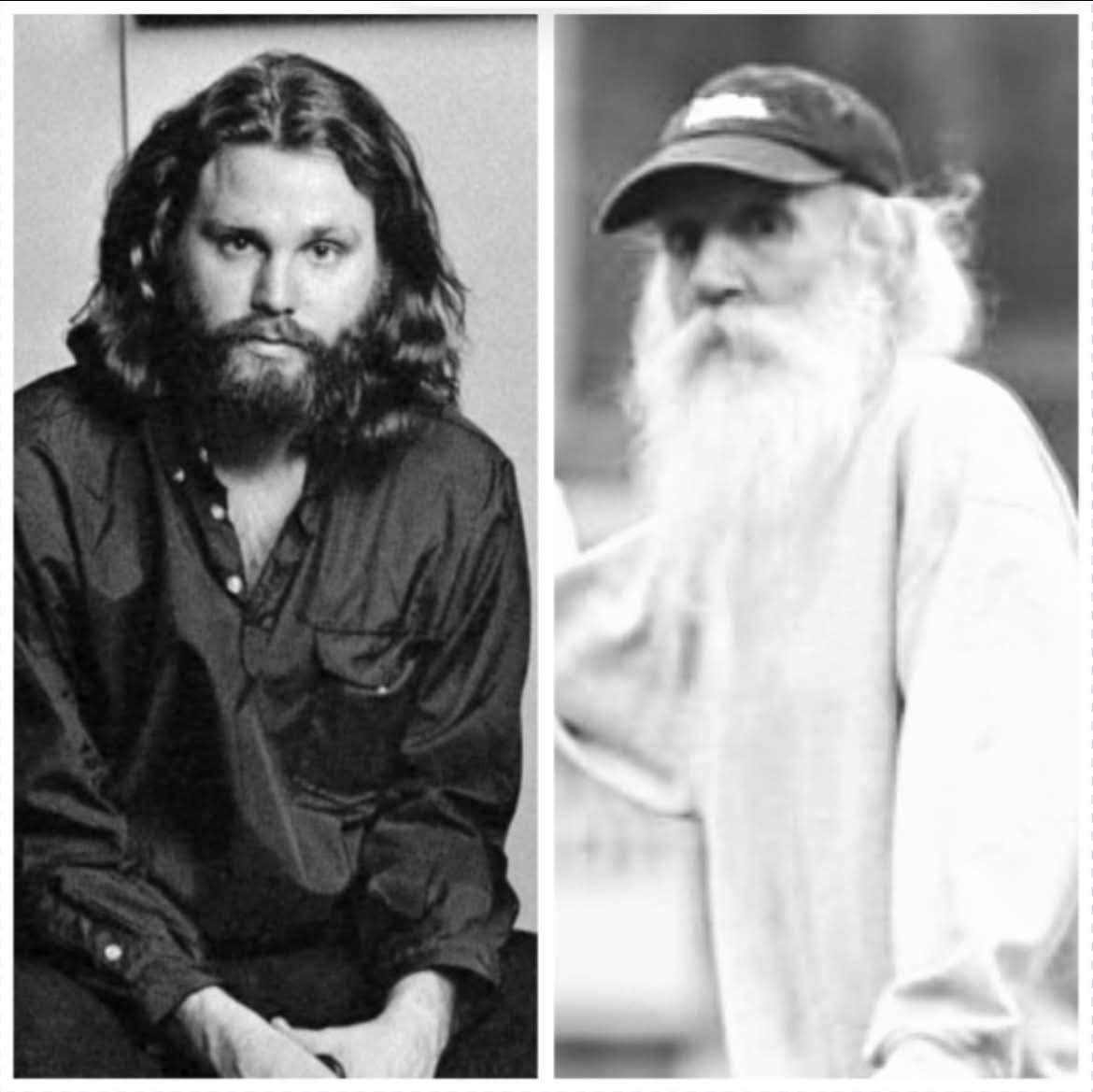
Twenty-five years ago, the story began with a whisper — a rumor drifting out of Oregon about a man named Gerald Pitts who claimed he’d found Jim Morrison alive and living quietly as a rodeo cowboy. That single lead became the spark that would ignite decades of curiosity, interviews, investigations, and coincidences for a writer who found himself drawn again and again into the strange orbit of Morrison’s lingering myth.
The author’s early journey into *citizen journalism* led him to conversations with people who existed on the fringes of Morrison’s world — Cliff Morrison, the supposed son of the Doors’ frontman, and Floyd Bocox, Cliff’s manager. Eventually, it turned into two decades of on-and-off work with Alan Graham, Morrison’s former brother-in-law, who passed away last year. Through all those years, the mystery surrounding Morrison’s alleged survival refused to die. Every path led to more contradictions, more strange overlaps, and more uncanny resemblances — all culminating in the haunting figure of Frank Wagner.
In recent months, the writer’s curiosity was rekindled by filmmaker Jeff Finn’s documentary *Beyond the End: Searching for Jim Morrison*. The film suggests that an elderly maintenance worker from upstate New York — referred to as “Mr. X” — might in fact be Morrison himself, having slipped out of fame’s grip decades ago to live in anonymity. Wagner has consistently denied the claim, yet something about his face, his voice, and his quietly poetic manner keeps the speculation alive. “I’ve seen how the Morrisons age,” the writer noted, “and it’s easy to see the young Jim aging into exactly the look of an elderly Frank.”
The coincidences piled up quickly. When the writer posted a podcast featuring Finn, Frank Wagner himself appeared online — liking the video and later showing up among the writer’s suggested friends on Facebook. One message led to another, and soon the two were corresponding, discussing everything from Frank Zappa to the Velvet Underground to the philosophy of the 1960s counterculture. Wagner’s voice messages, always calm and reflective, gave the sense of a man who had lived a thousand lives — or one who had carefully learned to sound like someone who had.
At times, the line between fantasy and possibility blurred. When Wagner sent photos from Miami Beach — one of them showing him flashing peace signs among a small group of men, possibly musicians — the conversation took on a surreal tone. Was this the final resting place of the mythic Lizard King, hiding in plain sight? Or was this simply a kind-hearted man, patient enough to entertain a stranger’s curiosity about a long-dead icon?
The exchanges became layered with symbolism and teasing ambiguity. Wagner sent images of coastlines, references to music, and even links to songs from a Miami band called *Velvet Edge*, claiming to have “just made a big hit with them.” He mentioned recording sessions at the Marley studios with Inner Circle — the legendary reggae group. For the writer, every message carried dual meaning. Was Frank hinting at something? Was he playing a role? Or was the writer’s imagination simply too entangled with the legend of Jim Morrison to tell the difference?
In the end, Wagner agreed to join a podcast — a conversation the writer hoped would finally bridge myth and man. But when the time came, Frank never showed up. Perhaps he was busy recording, or perhaps, as always, he preferred to remain a ghost — glimpsed only briefly before fading back into the shadows. In his absence, the myth grew larger, richer, and more elusive than ever.
A few days later, Wagner resumed posting — videos of The Velvet Underground, clips of orchestral music, and finally, Richard Strauss’s *Also sprach Zarathustra* — the piece inspired by Nietzsche’s *Thus Spoke Zarathustra*, a text Morrison had once quoted endlessly. It was as if Frank, whoever he truly was, had chosen to answer not with explanations, but with art, hinting at identity through metaphor.
The writer never proved anything — nor did he intend to. “I wasn’t here to blow anyone’s cover or prove anything,” he reflected. “Just to talk to one man who may or may not be another man, and see what it’s like.”
And that’s what makes the story so haunting. Whether Frank Wagner is a retired maintenance worker or Jim Morrison reborn in disguise, his quiet dignity — his refusal to clarify, deny too forcefully, or play into sensationalism — preserves the mystery. It lets the legend breathe.
After all, Morrison once said, “The most important kind of freedom is to be what you really are.” Maybe Frank Wagner is exactly that — a man content to live his truth, whatever it may be, while the world keeps guessing.
And perhaps that’s how Morrison would’ve wanted it.
Leave a Reply